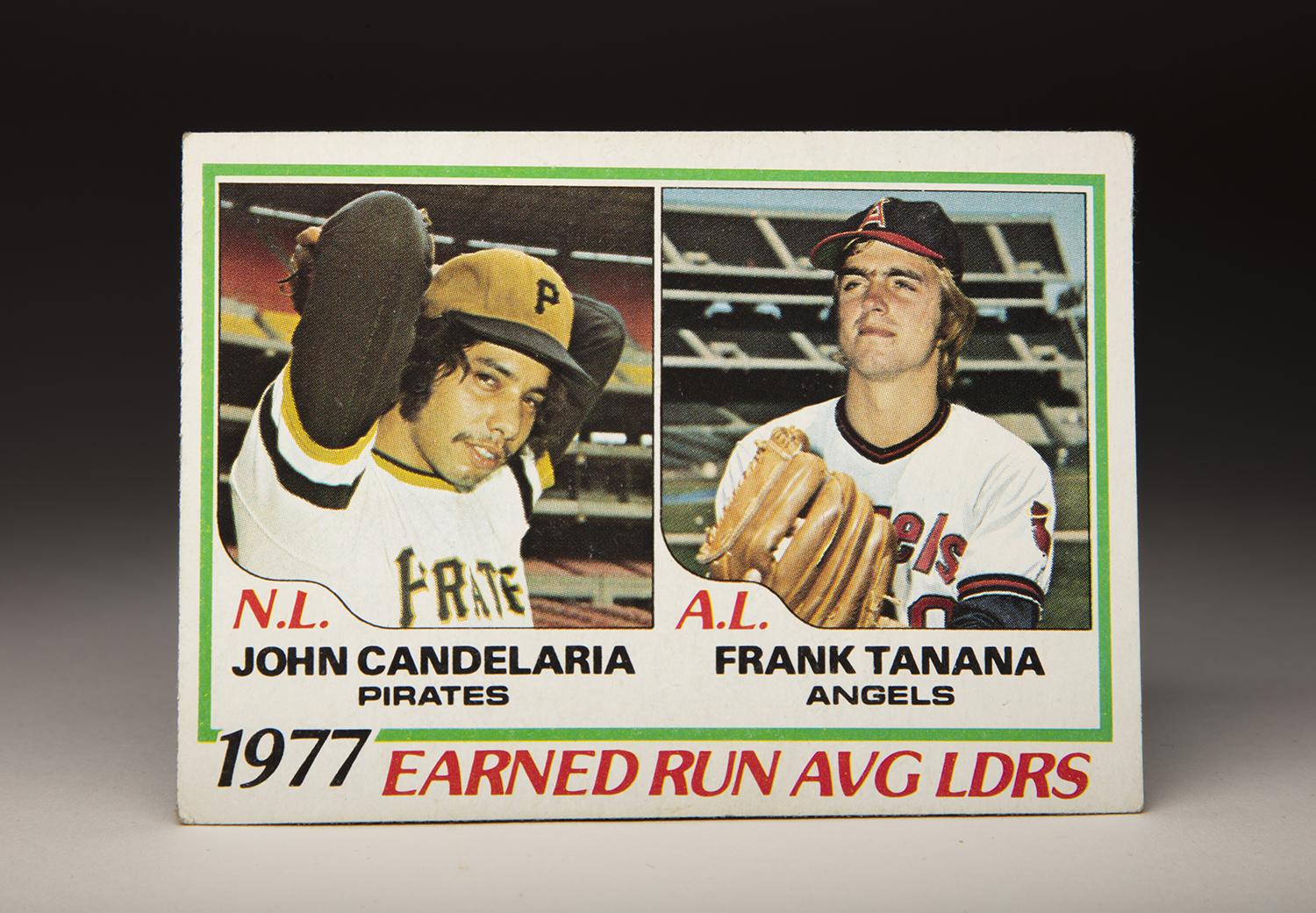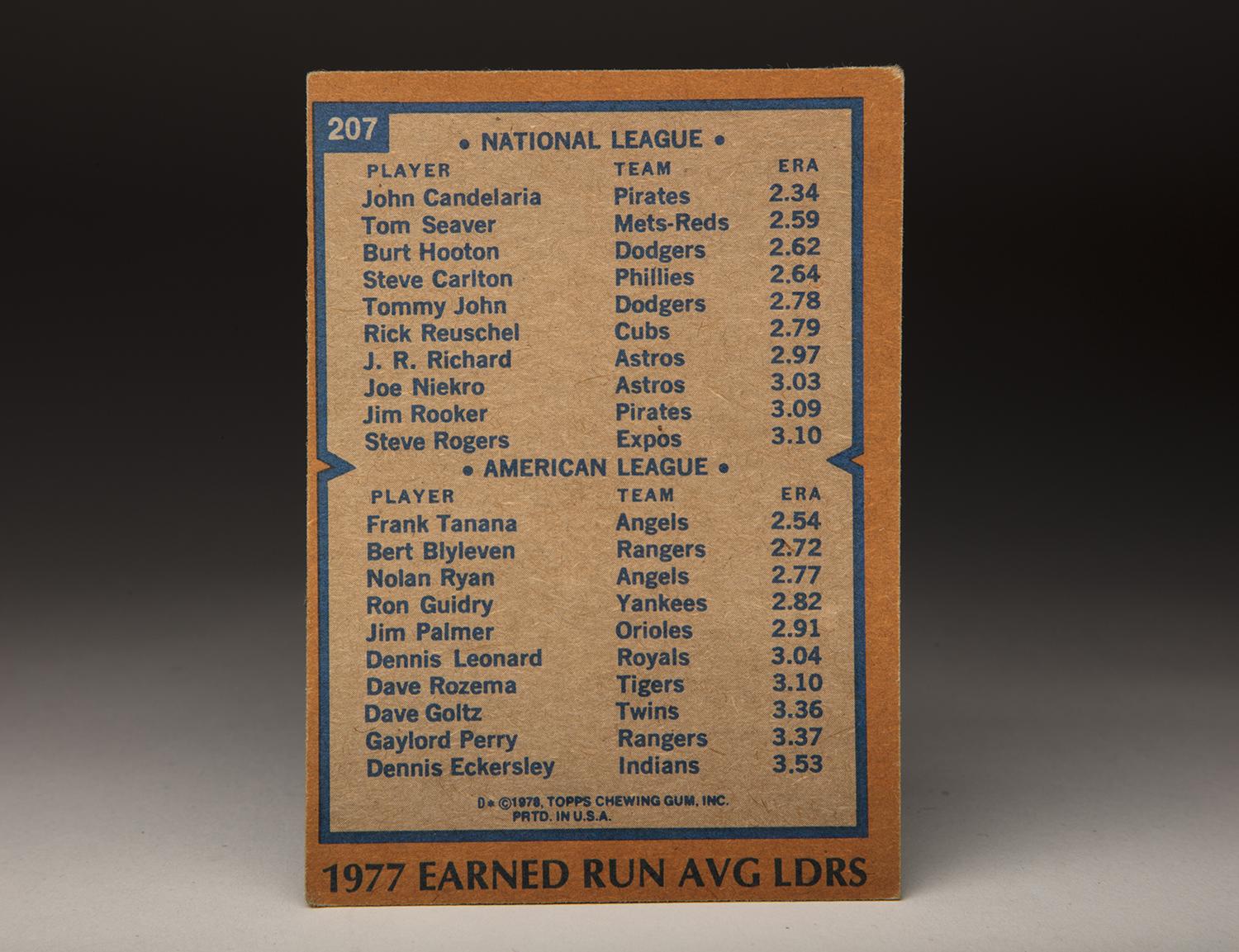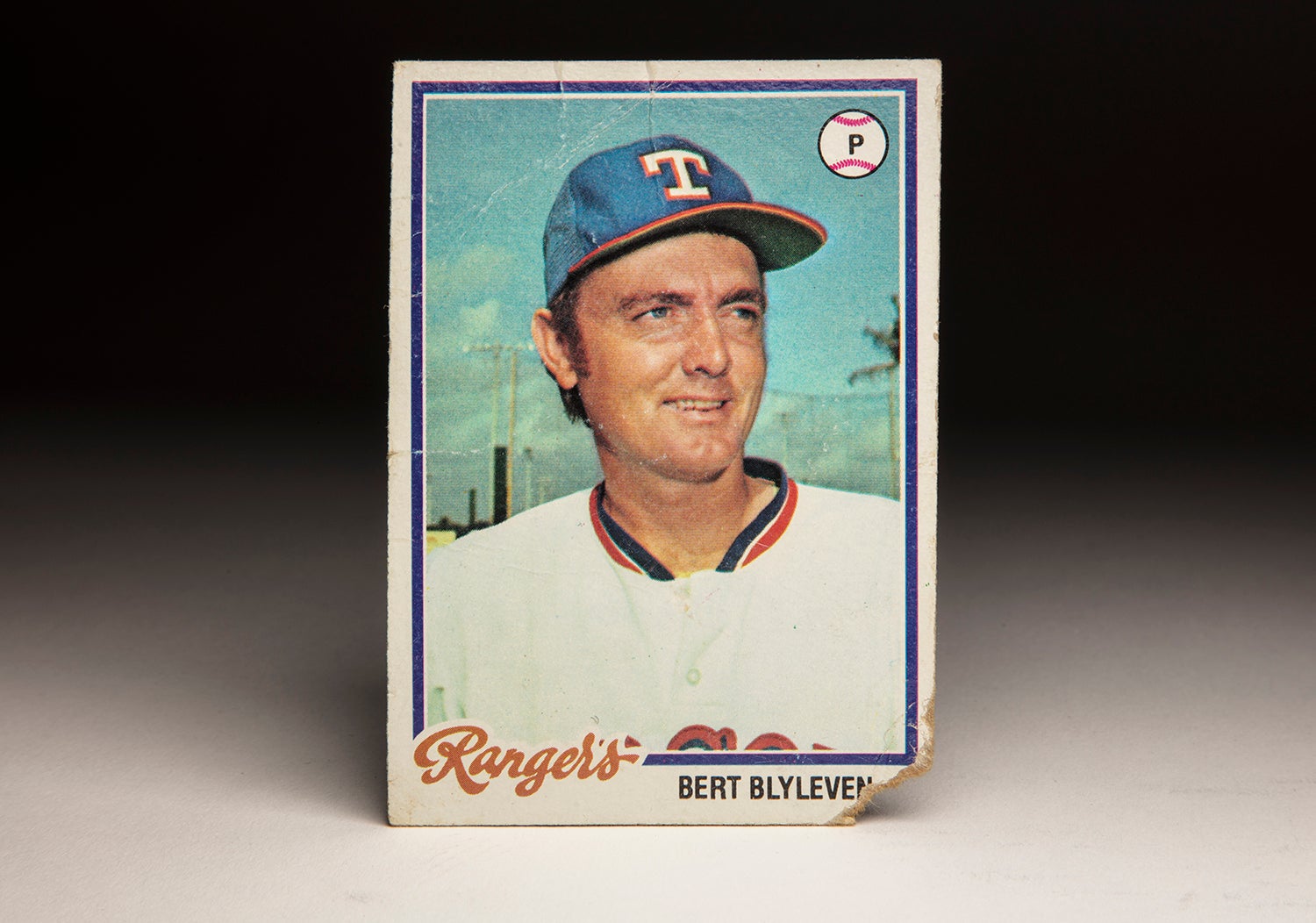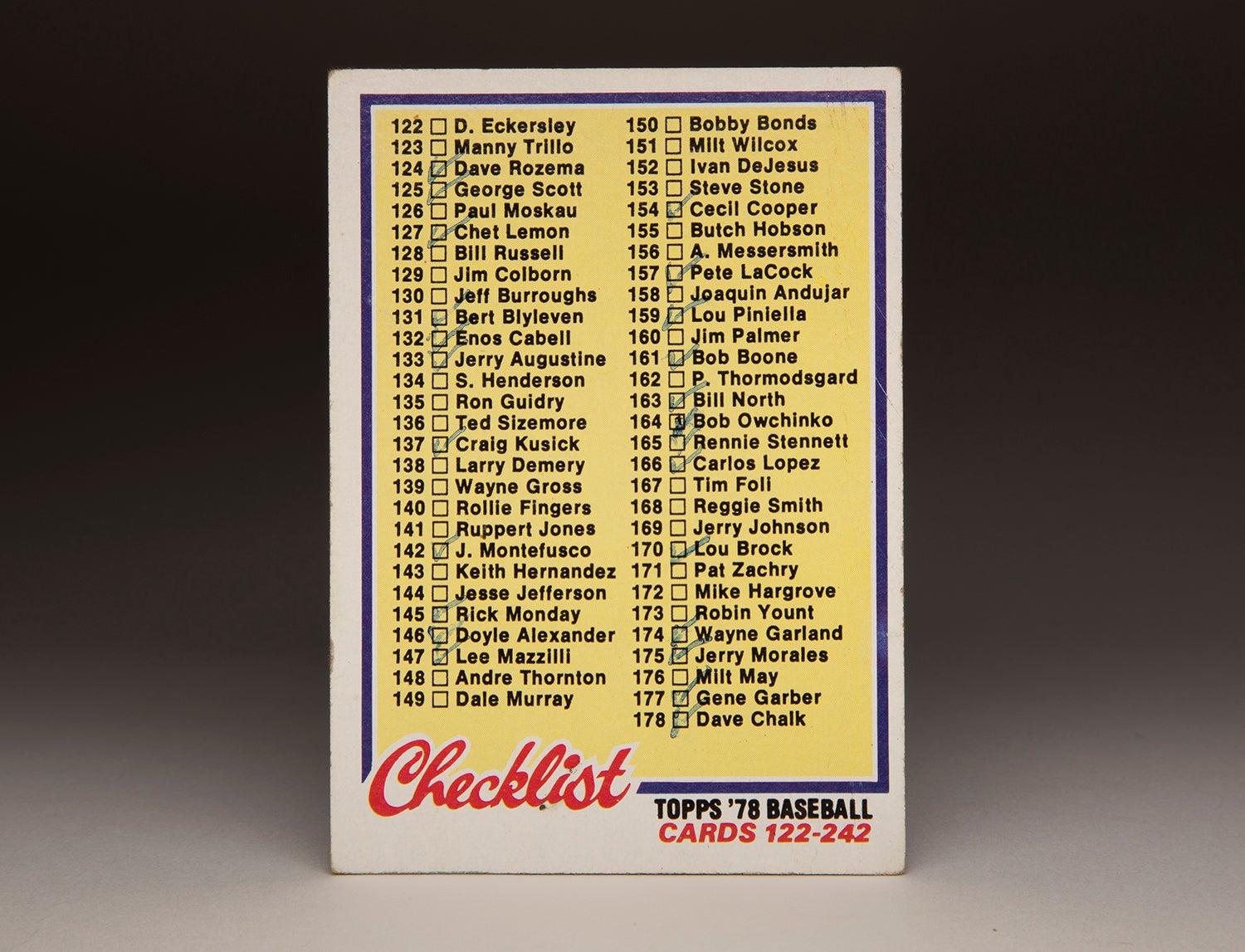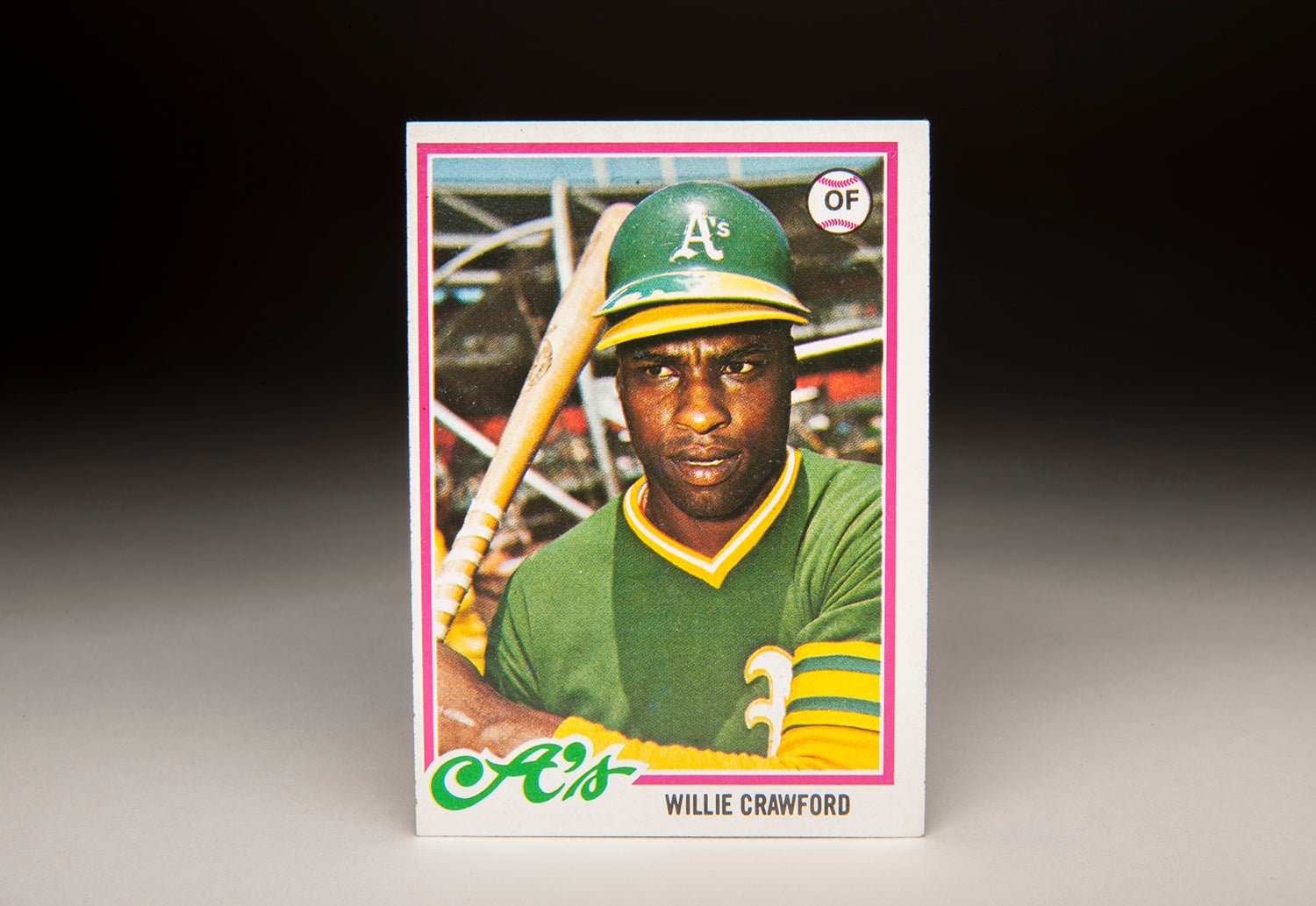- Home
- Our Stories
- #CardCorner: 1978 Topps ERA Leaders
#CardCorner: 1978 Topps ERA Leaders
Hall of Fame staffers are also baseball fans and love to share their stories. Here is a fan's perspective from Cooperstown.
In a game that treasures its history, they are time pieces that – for a nine-year-old card collector – had no past and a limitless future.
It was as if John Candelaria and Frank Tanana had been, were and always would be the best pitchers in baseball. After all, they shared a 1978 Topps card that proclaimed they were their league’s earned-run average leaders the previous season.
What else was I to believe?
For generations of young baseball fans, that first year of collecting cards would always be the set that established the standard. For me, that was 1978 Topps.
Hall of Fame Membership
There is no simpler, and more essential, way to demonstrate your support than to sign on as a Museum Member.
I look back and wonder: Why that year? My favorite team, the Pirates, won 96 games in 1977, but didn’t make the postseason. I remember nothing about those games.
But in the early spring of 1978, I caught baseball fever. And the Topps cards were the only cure.
Of course, at that age history is an elusive concept. I had no idea who Roberto Clemente, Paul Waner and Honus Wagner were. The only Pirates I knew were the guys on those baseball cards, in the home pinstripes and back-and-gold road unis.
So when I came across the ERA Leaders card, it was like reaching down into your couch and finding a dollar hidden in the cushions. I was so proud that a Pirates player was a league leader.
Candelaria and Tanana, both flame-throwing lefties, were two of the game’s best young pitchers in 1977. And without a baseball encyclopedia in the house – and with baseball-reference.com not even a pipe dream – I just assumed there was no one better.
The card itself dispelled that notion, even though I didn’t realize it. On the reverse, Topps listed the 10 ERA leaders in each league in 1977. The ranking included seven future Hall of Famers: Tom Seaver, Steve Carlton, Bert Blyleven, Nolan Ryan, Jim Palmer, Gaylord Perry and Dennis Eckersley. And with their respective ERA listed as well, the card literally helped teach me baseball and what the numbers meant.
There will never be a better way to learn the game.
Back on the front side, I loved Candelaria’s wind-up pose and into-the-camera glare. The guy just looked like he was ready to bring the gas and mow down opponents. This must have distracted me from his uniform, because it never dawned on me that the photo was likely taken in 1975 when the Pirates still wore their brown mustard-colored yellow caps that they made famous in the 1971 World Series. By 1977, a Candelaria home jersey (the Three Rivers Stadium seating bowl is clearly visible in the photo) should have featured a pinstriped top and a bright-yellow cap (or black cap) with horizontal stripes.
Minor details, to be sure. And easy to overlook when your nine-year-old self believes that the people who produced these baseball cards were surely the smartest, most knowledgeable baseball fans in the world.
Imagine my shock, then, when Candelaria and Tanana were not the best pitchers in the game in 1978. Candelaria went 12-11 with a 3.24 ERA, while Tanana’s ERA ballooned to 3.65 – a sky-high mark in a time when the league leaders were always under 3.00.
So by the time the 1979 Topps set was released, I understood that players on the leaders cards were not necessarily the game’s best. I mean, Ron Guidry led the American League in ERA in 1978 and was surely a star. But Craig Swan of the Mets? A 2.43 ERA to lead the NL?
Well, at least it was cool that we shared the same first name.
So 40 years later – in love with the game more than ever – I send Topps a heartfelt “Thank You.” It is clear my baseball passion was nurtured through its earliest years via the little cardboard slabs with pictures and numbers.
And as for the Candy Man and Mr. Tanana, you’ll always be the best – thanks to Topps No. 207 of 1978.
Craig Muder is the director of communications for the National Baseball Hall of Fame

